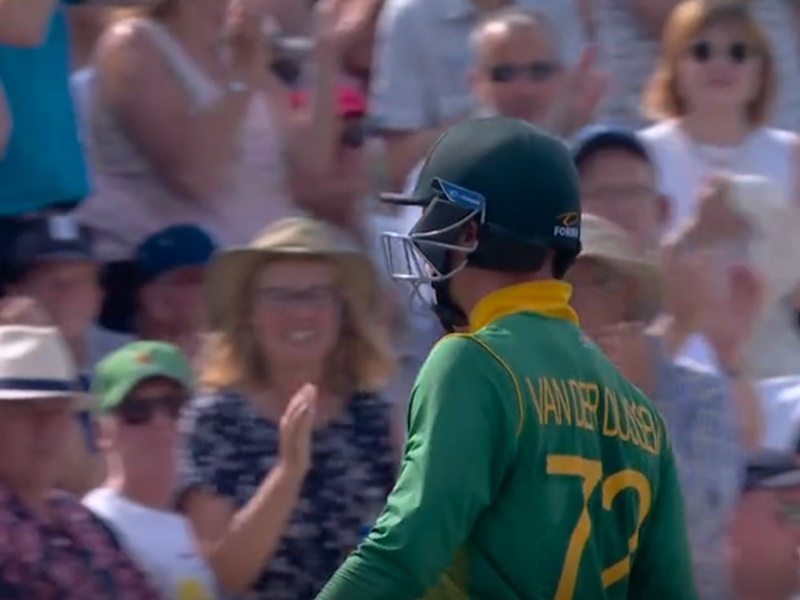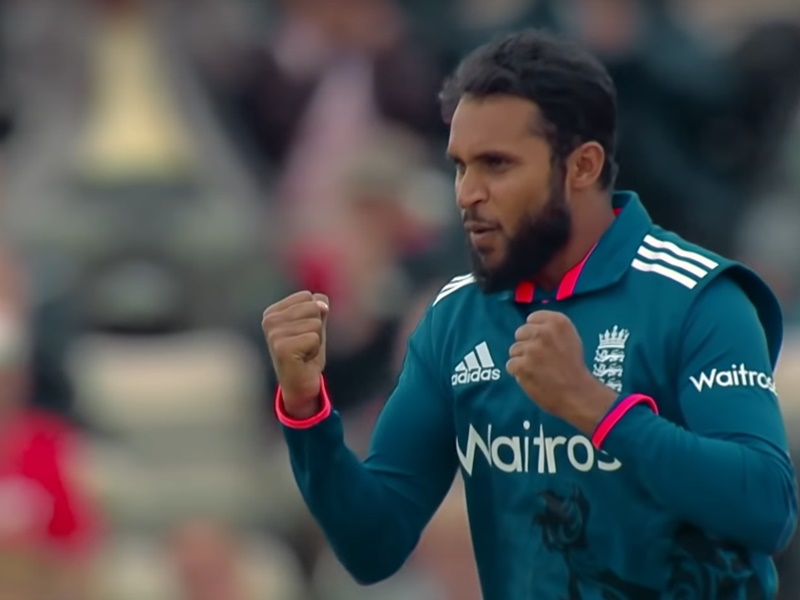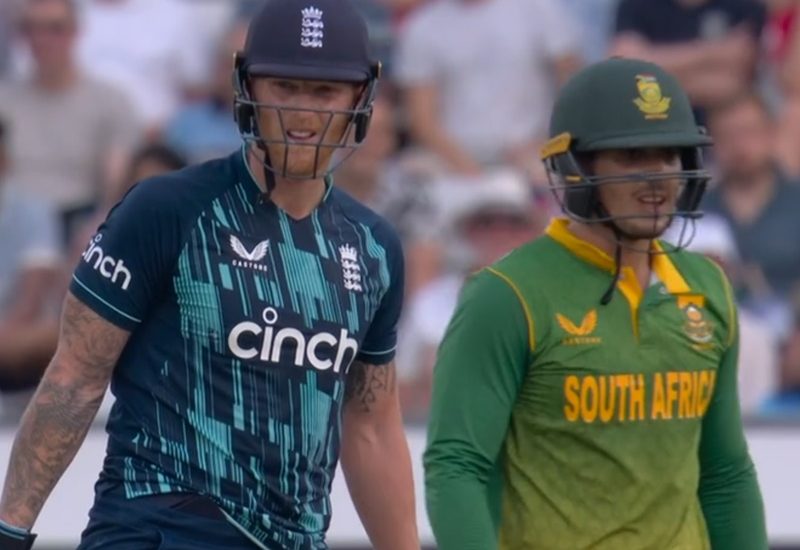Weary, ageing superstars normally start to shed formats from one end of cricket (T20s) or the other (Tests). How typical of Ben Stokes that he should instead see fit to tear out the middle. What does his decision say about the future of 50-over cricket?
International cricket’s middle format isn’t the most popular right now. It’s clearly the form of the game that’s least important to England’s highest profile player and the general reception to his departure has been about as enervated as, “Oh, well, fair enough.”
Reacting to Stokes’ decision, BBC cricket correspondent Jonathan Agnew asked: “Is it harsh to say that the 50-over format is struggling? It is probably true in terms of player appeal. If it were not for the eight-hour guaranteed broadcast rights, the format would be dead on its feet. A lot of the players do not enjoy playing it and it is a big commitment.”

You wouldn’t mistake that for a fulsome defence of the format in which England are world champions. Cricket is meant to be fun, but 50-over cricket is rapidly gaining a reputation as some kind of unavoidable obligation that was sent from the gods for the benefit of no-one.
We are not exactly outraged by this view. England have been playing one-dayers pretty much every other day recently and we’ve conspicuously and consciously failed to report on them. But that isn’t the same as fundamentally disliking the format.
A different type of one-dayer
To briefly take yet another of our habitual detours to road cycling, one of our favourite races of the season is Milan-Sanremo. It too is a one-dayer – the longest one of the season.
298km is a long way to ride a bike and especially so in mid-March without spring and summer miles in the legs. What’s interesting about Milan-Sanremo is how that distance combines with its moderately hilly finish to create a myriad of possible outcomes.

The likely winners of bike races are ultimately defined by the course. Finish on top of a mountain pass and you instantly narrow the possibilities down to just a handful of very skinny people. Go over cobbles and you narrow things in a different way (mostly Belgians). On a flat route with a flat finish, you’ll get a different group of people again. These things aren’t discrete. The most interesting routes are generally the ones that leave you wondering. (The same applies to riders. The ones with less extreme strengths and frailties are the ones who tend to make races more interesting.)
At no point in the season is a race as open as Milan-Sanremo. The race is long enough that a Tour de France winner like Vincenzo Nibali can get away from rivals on what would normally be a relatively unchallenging incline, as he did to win in 2018. At the same time those final hills aren’t quite challenging enough that you can rule out sprinters like Mark Cavendish, who won in 2009.
Sprinters and climbers are different beasts who share the same fields. In a three-week bike race like the Tour de France, they will chase victory on completely different days. They are so different, in fact, that they actually compete for different competitions – the green and yellow jerseys. It is only very, very occasionally – in races like Milan-Sanremo – when the best riders from each world are all striving for the win at the same time.
The middle ground
Extremes always seem more dramatic and appealing, but the middle ground can be fun in a different way. The middle ground is where you get overlap.
Cricketers like Ben Stokes, who was until last week a triple format international, are not really the norm. Most players – whether consciously or not – gravitate towards one end of the cricket spectrum or the other.
For every Joe Root, who has (almost accidentally) floated towards Test cricket, there are others like Quinton de Kock who have retired from the format in favour of an exclusively limited-overs career.

It doesn’t always involve retirement. Some simply pursue Test cricket or T20s more vigorously than the other and aren’t realistically in contention for the other format.
The 50-over Cricket World Cup is the one place where these worlds still meet.
We don’t know about you, but we find that idea appealing. We like seeing different approaches tested against radically different opponents. That’s what cricket’s about. Can the Test master hold his own in the brave new world of stats-driven white ball cricket? Can the T20 megabuckstar influence a longer match or are they really little more than a cameo artist?
A World Cup might give us Suryakumar Yadav facing five overs from Trent Boult, or Lockie Ferguson having a crack at Marnus Labuschagne – things we’re unlikely to catch sight of in either of the other formats. Those are exciting propositions not just because of their rarity, but because they give us an insight into the limitations and possibilities inherent in different approaches to the sport.
Polarisation
A counterpoint would be that if 50-over cricket were killed, maybe the best players would have more capacity to strive for inclusion in both of the remaining formats.
That’s probably true – although few are like Stokes or Jasprit Bumrah, excelling in all forms of the game. Most would still be better in one format or the other so there would still be a degree of polarisation.
Also, even on occasions when a more Test-favouring player did come up against a T20-favouring one, they wouldn’t be competing on what we might consider neutral ground. The contest would take place in one player’s preferred format or the other’s. The appeal of the old-fashioned one-day international is that it gives us disputed territory over which both can lay claim.
With a slower build to its climax but a start and finish inside a day, it’s really not a bad format. It’s probably just a bit overexposed. 50-over cricket still has its place. It’s just a much smaller place.
- Follow King Cricket on Twitter
- Get the King Cricket emails (roughly three a week)
- Help support the site through our Patreon crowdfunder


ODI cricket suffers from its raison d’etre. It was never designed to be a thing, it was just something to do when rain ruined a test match. It was either invent a new game for a bit of a laugh, or spend an extra day in the hotel with Geoff Boycott – the outcome was inevitable.
Test cricket is cricket, in the way it was intended to be played, and the way in which it developed over the decades. It turned out that to play a proper game of cricket, with all the ups and downs and ins and outs that would need, was going to need at least thirty hours on the pitch. Meanwhile, all other sports were getting themselves over and done with inside two hours.
I reiterate – ODI cricket was not designed to be Cricket-For-The-Football-Fan. It wasn’t designed to be anything. From a spectator’s point of view, it still requires the same all-day commitment that a test does.
T20, when that came along, was designed to be Cricket-For-The-Football-Fan. And to a large extent, that’s what it has become. Bear in mind that I’m not suggesting that cricket fans and football fans aren’t to a large extent the same people. But sometimes you just want a couple of hours at the ground, a match done and dusted. ODI cricket could never provide this.
So what for thirty years was referred to as “the short form” of the game is no longer that. Neither is it the long form. If it didn’t exist, there would be no need to invent it. It’s a hybrid, a cross-breed that managed to be born before one of its parents. It’s a time-travelling mongrel, to use the common phrase.
And then there’s the World Cup, which ruins all of those arguments. The World Cup is the only time that ODI cricket becomes a sport in its own right, instead of a warm-up / warm-down from the other formats. If anything is going to save ODI cricket, it’s the World Cup. It still feels… serious. The T20 World Cup has an element of sevens rugby about it, a bit of fun in the sun that nobody really takes seriously. The test championship is still in its infancy. In all parts of the world, the phrase “The World Champions” means exclusively the ODI world champions.
I hope it does survive. As a fan more of the longer game, I like its tactics and its sense of balance, both (IMO) missing from T20. I know that ODI specialists have been a thing for some years, but it still feels like a shorter game for test players, rather than a longer game for T20 players. Control and pressure are as important as naked skill. Required Run Rates creep this way and that; teams drift into winning or losing situations by way of tight bowling or nurdleworthy batting. It’s a one-day test match, not an extended T20 (not least because an extended T20 would need at least thirty players a side).
Do you think you could expand on this a bit Bert?
No. I literally used all the words I knew at the time to write that comment. Since then I’ve learned a few more, which I’ve used to write this comment. But now I’ve run out of words again, so I’ll have to…
This is a really excellent summary and reflects my thoughts exactly – the 50 over game exists by accident but has also (by accident) acquired some prestige, thanks to the World Cup and the hybrid factors KC discussed.
I wonder if administrators and broadcasters could lean into that in the marketing a bit more? At the moment, it feels like it’s promoted more or less the same as T20 (fast-paced, unstuffy, open to non-traditional fans) but the format might have more of an identity if it was presented as more of a prestige event? You could play less frequently, orient matches more around world cups, drop music and pyrotechnics and adopt more classic style kits? Just a thought.
I agree with almost all of this – both KC’s article and Bert’s extended, thoughtful riff from it.
I have long suggested that ODI Cricket would be squeezed by the emergence of T20 cricket. Apart from the World Cup, which I still believe to be an excellent format/tournament, I’d hardly notice or care if it stopped completely amongst the test playing nations.
But for the development of the game in associate nations the ODI format is hugely valuable and important, I feel. Likewise for the progress of professional women’s cricket internationally and domestically.
In participation cricket, the one day match (usually 40 to 50 overs a side) is the longer form of cricket in most parts of the world – only Australia has an amateur tradition of multi-day cricket in local leagues, often played over more than one weekend.
But returning to ODIs amongst test playing nations, the bilateral series seem, to me, to be an almost meaningless add on. The “qualification for World Cup” argument breaks down very quickly for me – the top six to eight teams from the previous World Cup could auto-qualify while the others have to play in some qualification tournaments along with associate nations, which would increase profile for the associates and have a more obvious meaning in themselves as mini-tournaments.
England play too much test cricket.
Since the beginning of 2015 (when England put a focus on white ball cricket) England have had 732 days of scheduled international cricket. The next most is India with 639 days. Sri Lanka come in third with 589 days.
If England hadn’t played a single ODI since 2015, they still would have had international cricket scheduled on 595 days. If you remove the 80 T20is as well they’re still ahead of Pakistan, New Zealand, Bangladesh and only three days behind South Africa.
Removing bilateral ODIs but leaving the World Cup surely runs the risk of devaluing the World Cup, doesn’t it assume a kind of exhibition status if most of the top teams haven’t played at international level since the last tournament. Further given the lack of domestic matches played by most internationals these days they wouldn’t exactly be well practiced either…
Batting between Root and Buttler feels very “Hey, Moeen…”